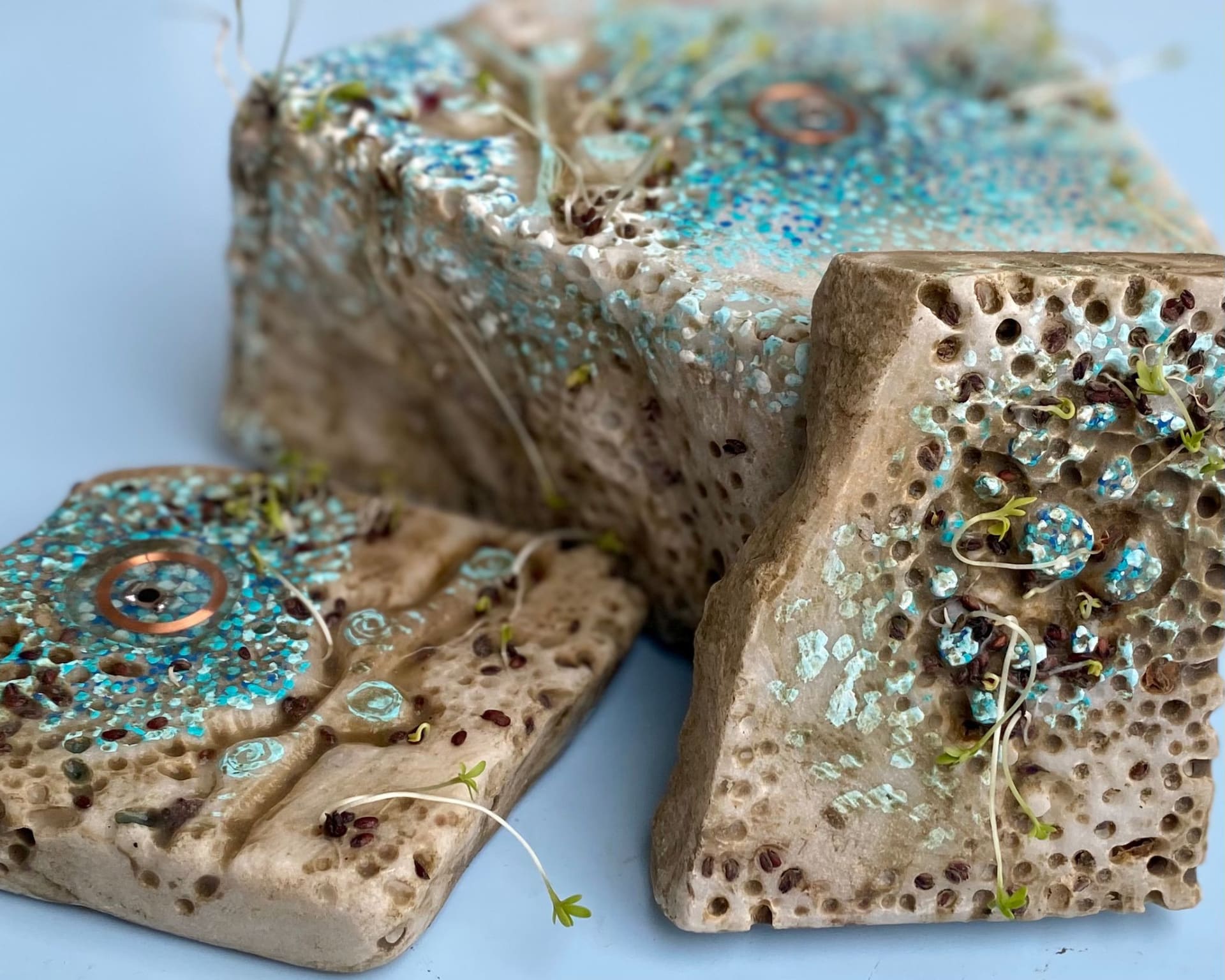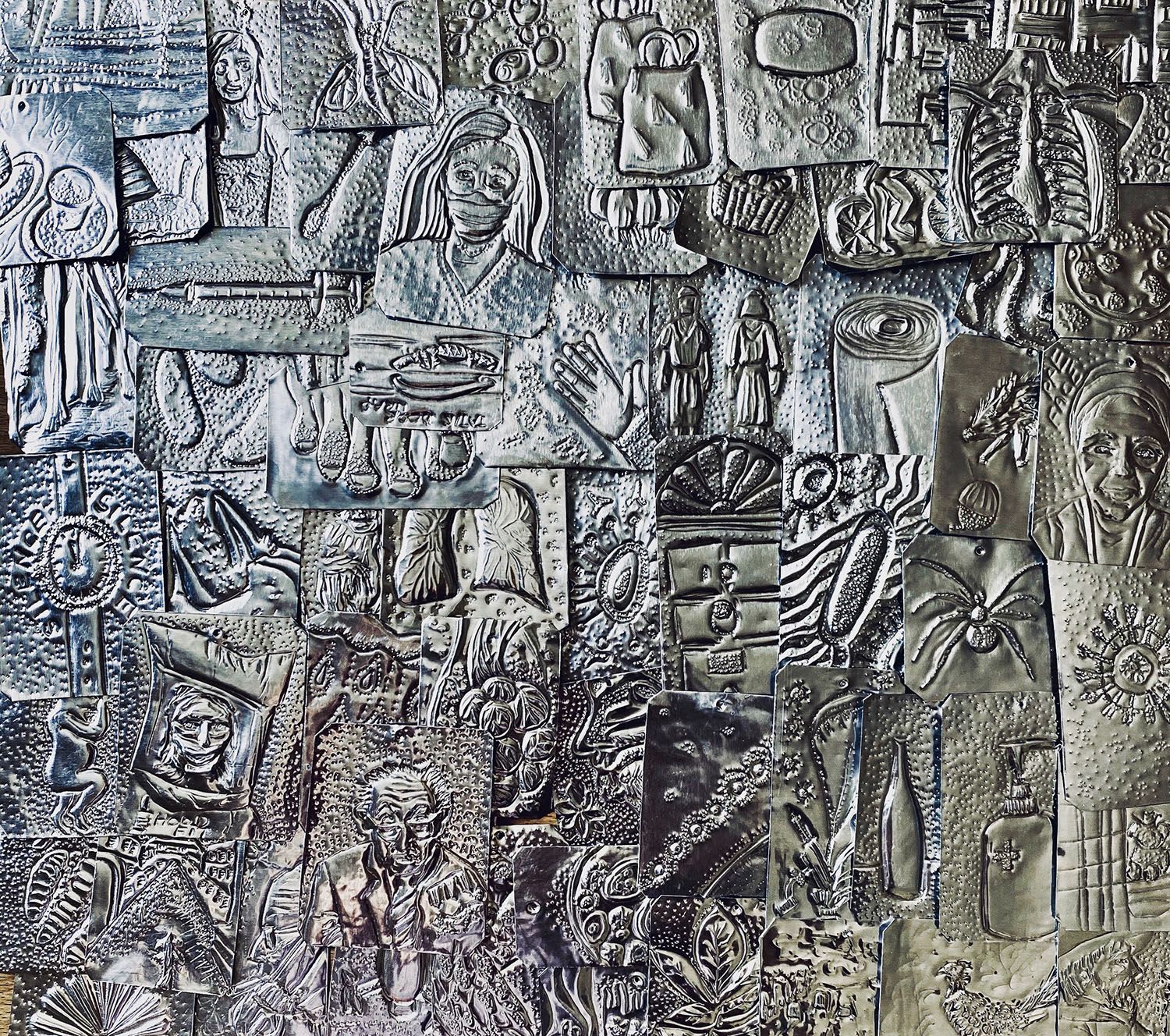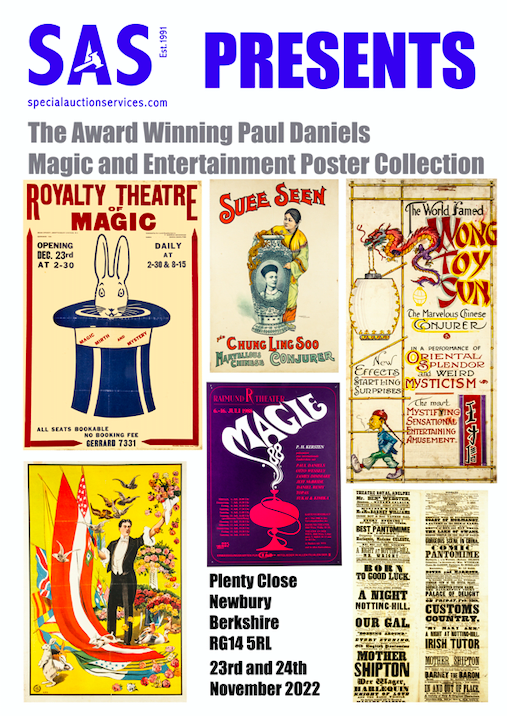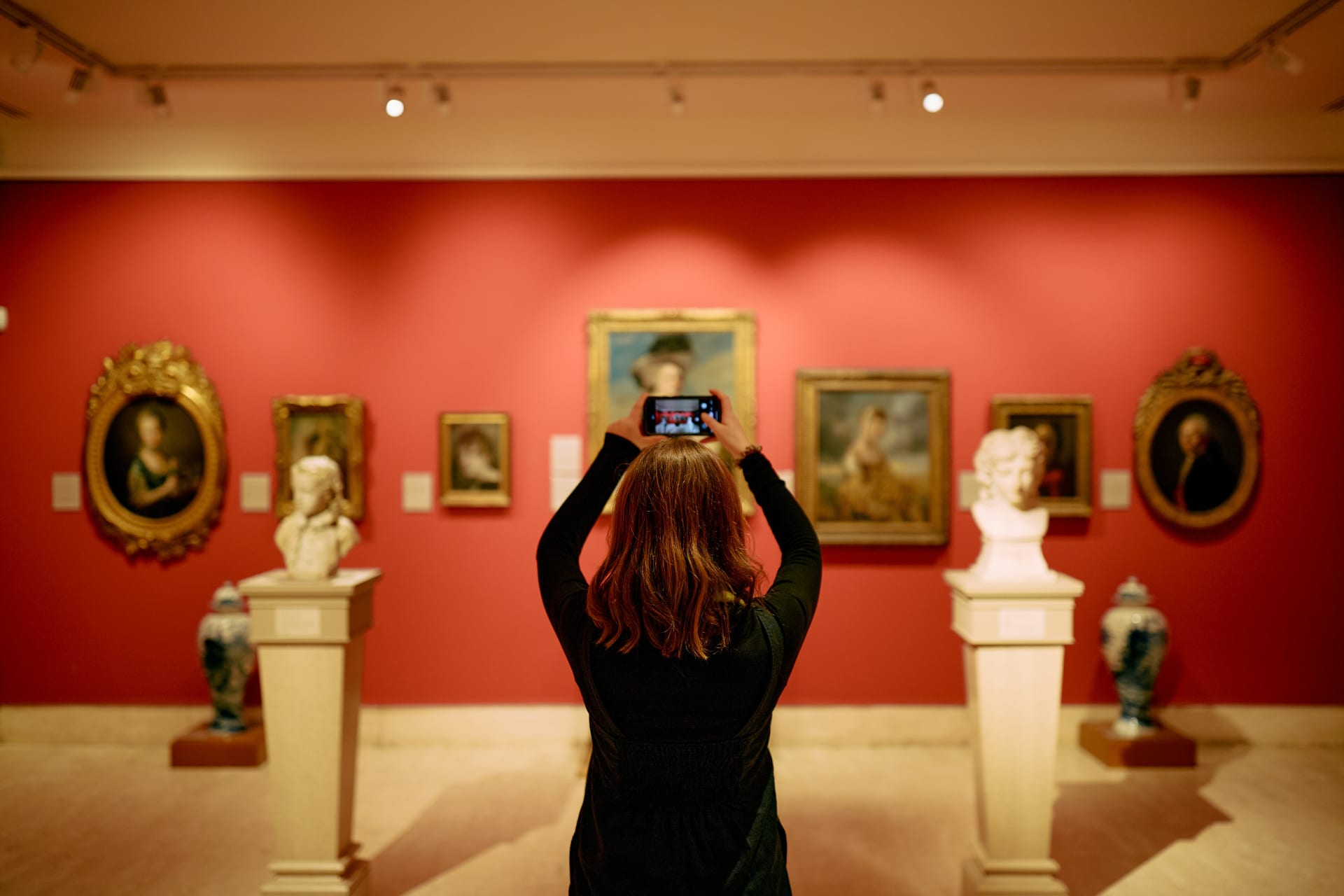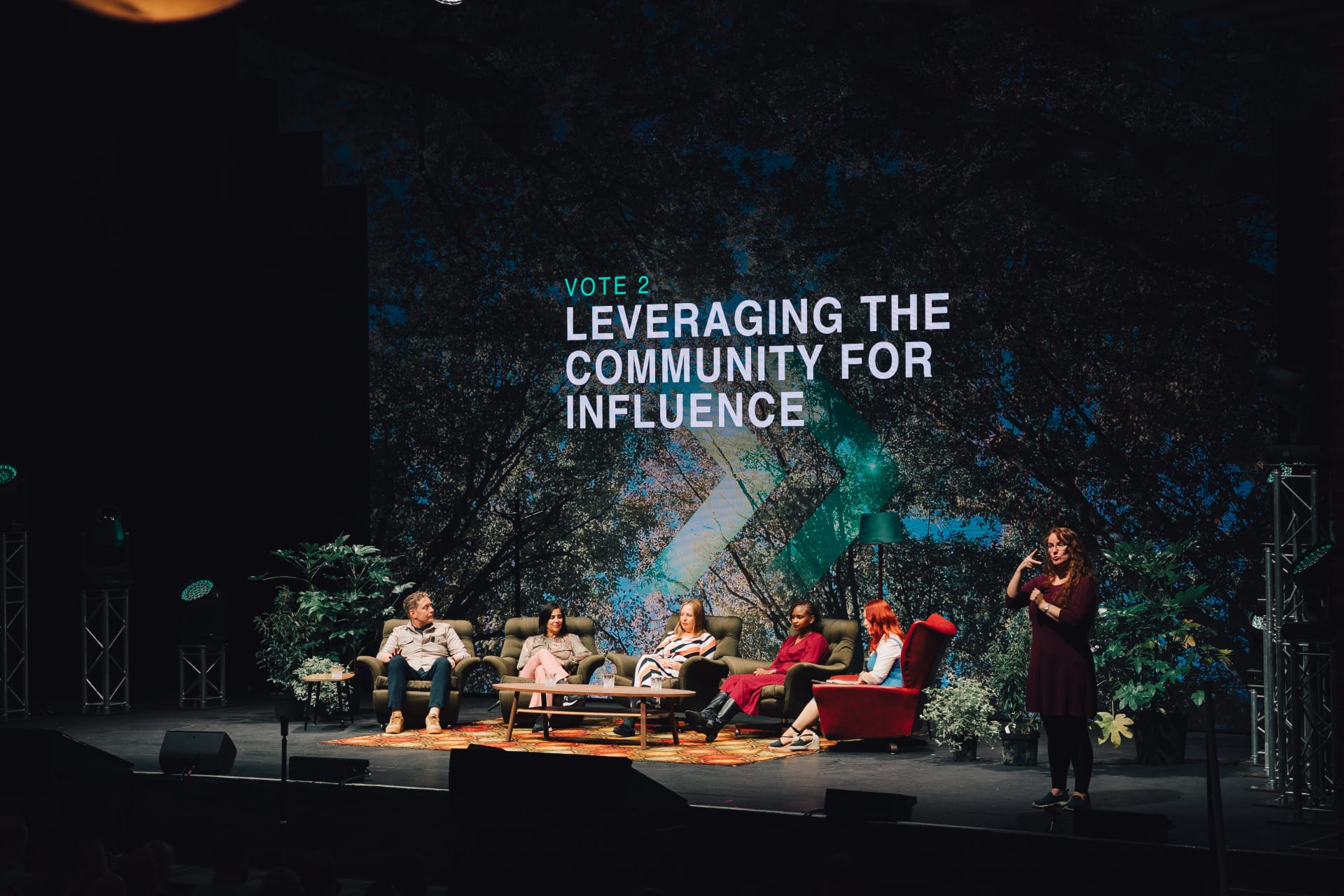This month’s exhibition at The North Wall Arts Centre in Summertown showcases an intriguing series of works in a solo show by internationally renowned bio-artist Anna Dumitriu who produces art with living systems, bacteria and synthetic biology at its core. As part of the IF Oxford science and ideas festival, she asks how can art give insight into our complex world?
In Collateral Effects, thought-provoking pieces developed from collaborations with researchers and scientists take visitors on an explorative journey through synthetic biology, genomics, carbon capture, and infectious disease. With installations and sculptures created in the lab and the studio, Dumitriu reveals unexpected twists in the story of human co-evolution with the microbial world. She looks back at the social history of medicine, explores the collateral effects of the pandemic on science and society, and considers the sustainability of the health of our species in the future. “Looking back to see how things changed as a side-effect of something else can give us new ways to look forward,” says Anna.
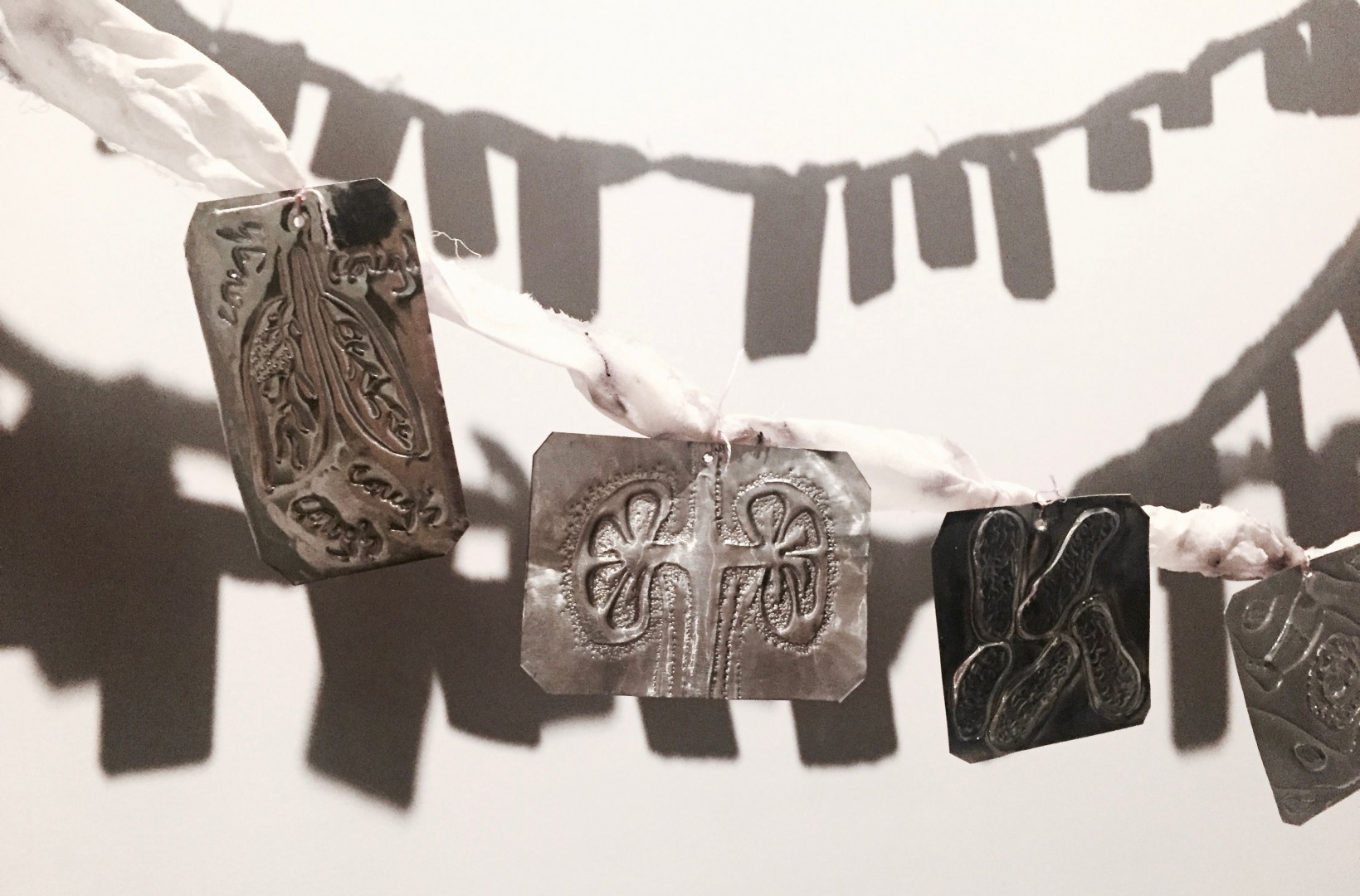 Across the gallery, hundreds of silver-coloured secular ‘votive offerings’ glitter as they hang. Ex Voto is an ongoing participatory artwork that explores the impact of infectious diseases and antibiotics on our lives; each sharing the story of the maker in a symbolic way. These secular votive offerings evoke those found in religious settings, symbolising a wish or giving thanks for its fulfilment. During the pandemic, Anna documented experiences, reflections and memories of the period to explore the changing face of treatment of the disease, recovery stories, and other moments of note. Look out for masked faces, shopping bags, and hand sanitiser amongst the collection.
Across the gallery, hundreds of silver-coloured secular ‘votive offerings’ glitter as they hang. Ex Voto is an ongoing participatory artwork that explores the impact of infectious diseases and antibiotics on our lives; each sharing the story of the maker in a symbolic way. These secular votive offerings evoke those found in religious settings, symbolising a wish or giving thanks for its fulfilment. During the pandemic, Anna documented experiences, reflections and memories of the period to explore the changing face of treatment of the disease, recovery stories, and other moments of note. Look out for masked faces, shopping bags, and hand sanitiser amongst the collection.
The earliest votives in this overhead installation hang on ribbons dyed with bacteria, including various species of gut microbiota and natural antimicrobial substances such as madder root, used as a red and orange dye for leather, wool, cotton and silk since ancient times. Others hang on walnut-dyed ribbon impregnated with plague DNA, a reference to the famous seventeenth century herbalist Nicholas Culpeper who recommended walnuts as a treatment for plague. The later pandemic votives, however, are hung on turmeric-dyed ribbon because the bioactive antiviral compound curcumin found in turmeric root is proving a promising option for treatment of Covid according to recent research. These ribbons are also impregnated with actual SARS-CoV-2 RNA (coronavirus) and it’s an intriguing unsettling feeling to approach a piece that includes such perceived peril. Made from a plasmid construct it’s a safe, non-infectious reagent which also serves to remind us of the value of medical science to our quality of life.
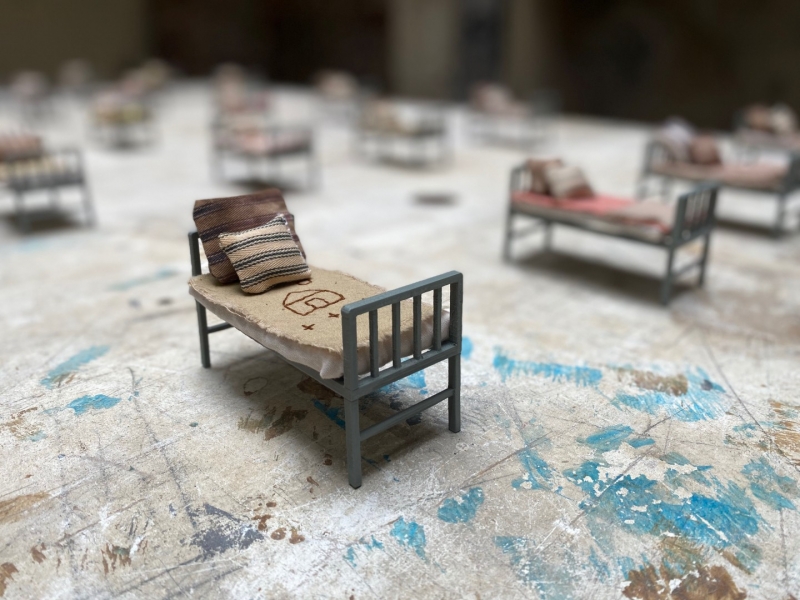 Near the votives, in an installation called Shielding, lines of miniature hospital beds evoke the first temporary hospitals that sprang up in China at the start of the pandemic, and encourage reflection on the increase in domestic violence during the pandemic. This was an unforeseen impact of enforced quarantine around the world, highlighting the paradox of defining a home as a shelter in which to ‘shield’ and be protected.
Near the votives, in an installation called Shielding, lines of miniature hospital beds evoke the first temporary hospitals that sprang up in China at the start of the pandemic, and encourage reflection on the increase in domestic violence during the pandemic. This was an unforeseen impact of enforced quarantine around the world, highlighting the paradox of defining a home as a shelter in which to ‘shield’ and be protected.
In other works, Anna also highlights the collateral effects of the pandemic on the globally significant disease tuberculosis (TB), antibiotics usage and research in this area over the last three years. TB is one of the world’s largest killers – it took a year for Covid to kill 1.2-1.5 million people yet last year TB killed 1.7 million people and currently we accept that annually. A new piece, Coming Back, is a door sourced from an olde-worlde Victorian terrace onto which Anna has carved textures of the effects of TB on the lungs. The door has a handle taken from an American TB sanitorium, which was open during the crusade against the disease in the 50s. The handle is engraved with the two-barred Cross of Lorraine, the international symbol of ‘the crusade against TB’ (and the logo of the American Lung Association) and in the past was touched by many contaminated hands and those treating them.
Anna impregnated the door itself with a Euro-US strain of TB, once known as the ‘romantic disease’ due to its historic links to poetry and art. “The strain most commonly seen in India and most of the rest of the world today, however, is a different strain that originated in the UK and Europe and was a collateral effect of colonialism. Today when people saying that TB is ‘coming back’, they mean re-emerging in the UK, yet actually it is coming back to its point of origin: recent developments in genomics have allowed us to identify different strains and so cutting-edge research gives us new stories of the social history of medicine, colonialism and disease,” explains Anna. “I like to draw these into my art.”
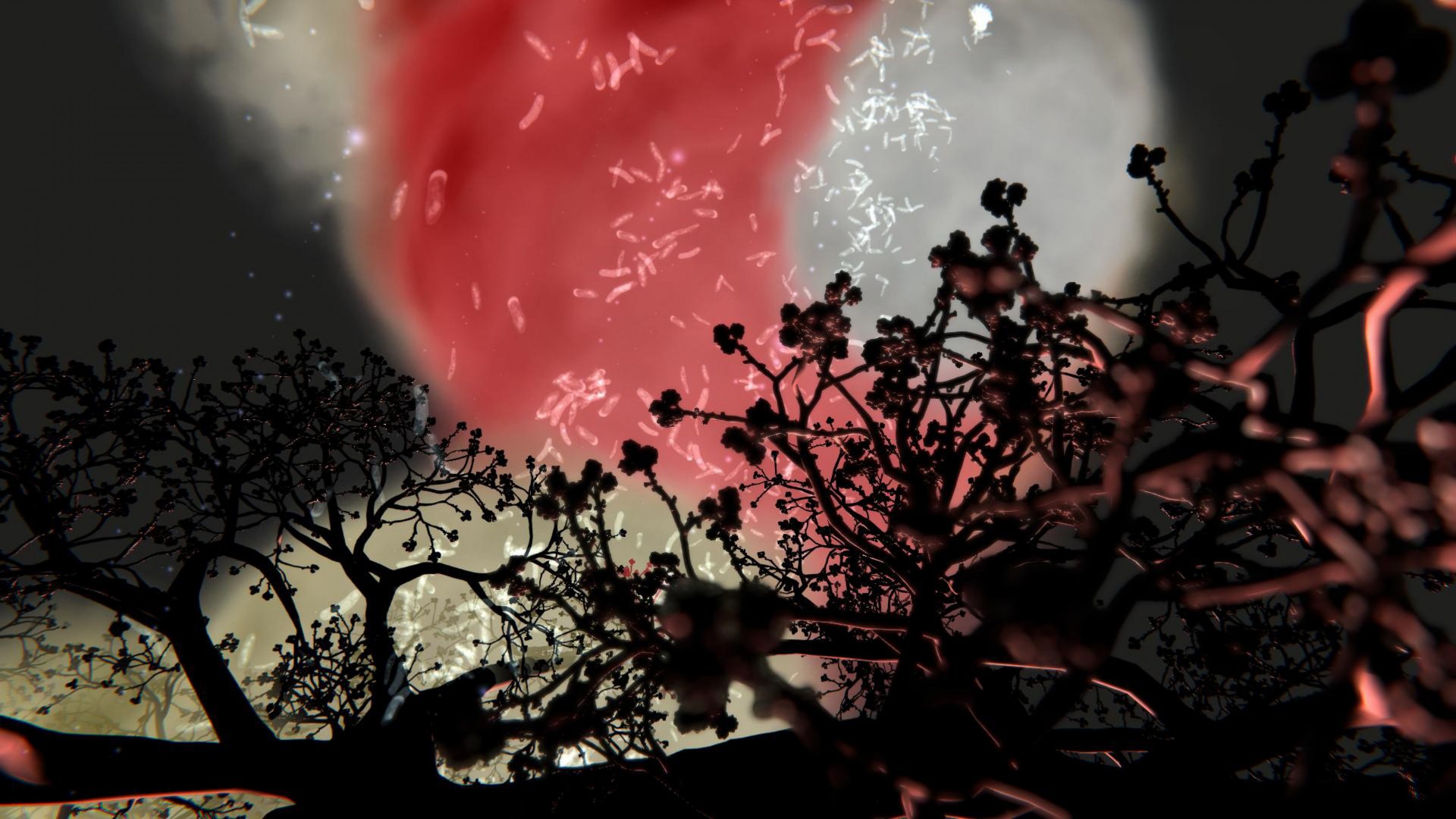 Alongside Coming Back, Susceptible is a colourful data-driven digital artwork drawn from the analysis of thousands of images of different strains of TB bacteria, growing in the presence of several antibiotics. Antibiotics are crucial to global health and Dumitriu showcases the effects of the pandemic on TB, when the number of people treated for TB fell, partly because people were locked-in reducing its spread but also because TB has similar symptoms to Covid so was often incorrectly identified.
Alongside Coming Back, Susceptible is a colourful data-driven digital artwork drawn from the analysis of thousands of images of different strains of TB bacteria, growing in the presence of several antibiotics. Antibiotics are crucial to global health and Dumitriu showcases the effects of the pandemic on TB, when the number of people treated for TB fell, partly because people were locked-in reducing its spread but also because TB has similar symptoms to Covid so was often incorrectly identified.
This installation is based on cutting-edge science by Oxford University researchers from the CRyPTIC Project, and many international collaborators, who grew 10,000 TB patients’ samples with different antibiotics, and sequenced the bacteria’s whole genome: they can now infer from the specific genome of a sample of TB bacteria which of the most-used antibiotics will best treat that specific patient’s disease.
“It’s a step closer to the individualised prescription of antibiotics and would be an immense move forward for a sustainable medical future for us all via better global antibiotic stewardship, which rather went out of the window during the pandemic. For example, many thousands of Covid patients were given antibiotics as a preventative measure. This was a huge problem for antibiotic resistance which, according to former Chief Medical Officer Dame Sally Davies, is as big an existential threat to humanity as climate change. If infections become resistant to treatment by antibiotics, we jeopardise both our ability to survive common disease, and successful medical practices such as operations. However, during the pandemic there has been a real ramping up of genomics research around antibody treatments which is great news,” says Anna.
The exhibition Collateral Effects runs at the North Wall Arts Centre Thu 6 – Sat 29 October (excluding Sundays) Mon – Fri: 10am – 4pm, Sat: 12 – 4pm.
Related events
Collateral effects of the pandemic: meet the researchers
North Wall Arts Centre, Saturday 15 October, 2 – 4pm
The Covid pandemic affected everyone and everything in different ways and for some scientists in Oxford and beyond, the effects may surprise you. On Saturday 15 October , there’s the chance to meet some of those whose work around infectious diseases, climate change and more has inspired Anna Dumitriu’s exhibition. Chat to them about how they have navigated the pandemic and the unexpected impacts it has had on their research.
What happens when scientists and artists collaborate?
Mon 17 October, 7 – 8.15pm. Digital event via if-oxford.com
Internationally renowned artist Anna Dumitriu and three of her scientific collaborators Dr Jane Freeman, Dr Nicola Fawcett and Dr John Paul, explore the background to artworks in the Collateral Effects exhibition at the North Wall Arts Centre and the importance of collaboration across art and science.

